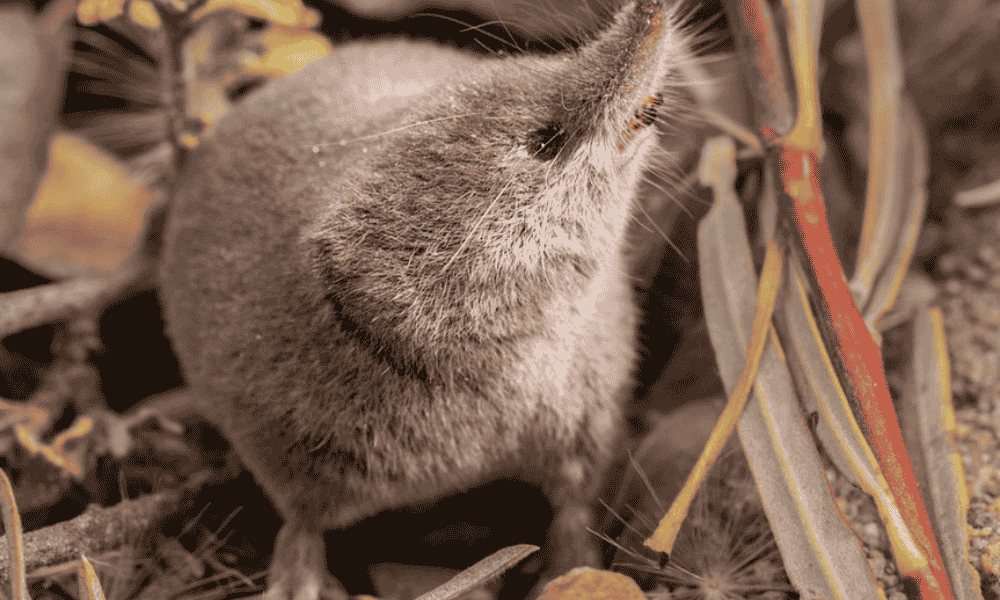California: For the first time, a rare mammal native to California has been photographed alive. The Mount Lyell shrew, known for its elusive nature, was captured in stunning detail by wildlife photographer Vishal Subramanyan and a team of student scientists. This historic moment marks a significant milestone for both researchers and wildlife enthusiasts.
Historic Capture in the Sierra Nevada
The moment unfolded as the Mount Lyell shrew paused after munching on some mealworms. With its long snout pointed skyward, it was blissfully unaware of the historic portrait being taken. According to the California Academy of Sciences, no one had ever managed to photograph a living Mount Lyell shrew before. This made it the only mammal species in California that had eluded human cameras until now.
In October, Subramanyan, along with fellow students Prakrit Jain and Harper Forbes, embarked on a mission to capture images of this elusive creature. Their adventure took them to the eastern Sierra Nevada mountains, where they managed to photograph and observe six live Mount Lyell shrews before safely releasing them back into the wild.
The Inspiration Behind the Project
The idea for this ambitious project originated with Jain, a student at the University of California, Berkeley. He expressed surprise that no one had ever photographed a live Mount Lyell shrew. Jain, Subramanyan, and Forbes collaborated with the Museum of Vertebrate Zoology at UC Berkeley to design a plan. They targeted streams and wetland habitats near Lee Vining, about 300 miles east of San Francisco, for their search.
“I’m always down for a crazy adventure,” Subramanian remarked. “So I said, ‘Sure, why not? We should give this a try.’” Subramanyan told CNN
The Challenges of Capturing Shrews
Shrews have a very high metabolic rate, which means they cannot survive without food for long. This poses a challenge when it comes to trapping them. The team set over 100 pitfall traps, which were designed for the shrews to fall into as they walked. They closely monitored these traps for three consecutive days, sleeping for only two hours at a time to ensure the animals’ well-being.
“We caught a Mount Lyell shrew within like the first two hours,” Subramanyan shared. “It shows that it’s generally an underappreciated species in an underappreciated ecosystem.”
During their expedition, they also recorded four different species of shrews in the area. Some were so similar to the Mount Lyell shrew that genetic tests were necessary to confirm their identities.
Handling the Shrews
Handling the shrews proved to be a bit challenging for the team. Forbes explained that the animals are small but can be difficult to manage. “They bite and they’re venomous,” she noted. The researchers had to be innovative, weighing the shrews in plastic bags, which posed another challenge as the tiny creatures would chew through them.
Despite the difficulties, the effort was worthwhile. By capturing the shrews alive, the team could observe their behavior. They noted that the shrews often stash food for later and take quick naps, which helped the researchers learn more about their habits.
Importance of Public Awareness
Photographing live animals, particularly those that are smaller and more obscure, can help the public connect with these creatures. This connection is essential for conservation efforts. Mount Lyell shrews are severely threatened by climate change. Researchers estimate that they could lose up to 90% of their cold, high-altitude habitat as global temperatures rise.
“Without that kind of public awareness and outreach through photographs, the species could have just quietly disappeared under the radar, and nobody would have had any idea about it,” Subramanyan emphasized.
The team’s remarkable achievement not only sheds light on the Mount Lyell shrew but also highlights the importance of protecting vulnerable species. Their efforts remind us that every creature, no matter how small, plays a vital role in our ecosystem.












